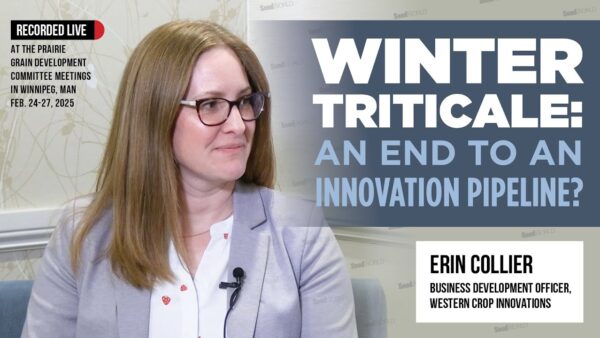Stacking the Odds for Success
In the past decade, multi-stacked hybrids have come into the marketplace and these stacks are expected to grow even larger in the coming years. While the number of stacked traits has increased dramatically, and may cause some confusion to those purchasing the products, the flip side of the new hybrids are convenience and higher yields and quality. For those selling these new stacked traits, the way they conduct business has evolved.
Ron Osthus, president of R.C. Thomas Company, says stacked traits have changed the seed business of virtually every company selling them. It has added new and additional income streams to those companies selling technology integrated seed varieties,” explains Osthus. “Secondly, it has changed the seed selling ‘language’ spoken between growers and seed sellers. Farmers have changed from asking if a retailer has a specific variety or specific maturity to instead asking if the seed seller offers a particular technology.
Seed Sellers Key
Seed sellers are a very important facet of the selling process; therefore, seed companies have had to increase and/or change their training concepts with the introduction of these new technologies. “Knowledge of an individual’s specific needs for their business is very important. A seller needs to know their customers’ business to provide options that will work the best on that producer’s farm,” says Ben Kaehler of Dow AgroSciences.
Osthus puts it very succinctly: “The farmer can do little, if any, with traditional trait selection strategies anymore. Things are just simply moving too fast in this world of plant genetics, trait technologies and management strategies,” he says. Therefore, Osthus feels a grower has to surrender the seed selection process to his seed supplier.
Stacked Traits Plus Bundling
While there are stacked traits in this selling environment, there is also bundling available at most retail levels and stacked traits and bundling are a good combination. “Bundling has been with us forever. My opinion is that it is much less of a problem than large farmers who are shopping around for various companies’ technology integrated varieties, that they deem as all being the same, therefore, they see these commodities with the only difference being price,” says Osthus.
Kaehler adds that bundling and stacked traits together offer added value. “It would cost more to buy technologies separately,” says Kaehler. “Why buy a burger, fries and drink separately when you can purchase all three in a value pack for a discount? Bundling provides not only savings but one-stop shopping for buyers.”
How Many Traits are Enough?
Alan Gould of Verdant Partners says the right combination is a question of price versus value. “Obviously if the technology fee charged for stack of traits pushes the price of a bag of seed beyond the value of the harvestable yield, there are too many traits in the package. An indication that this situation is almost here is signalled by the fact that small numbers of growers are reverting to conventional genetics,” he says.
Conclusion
In summary, Osthus says seed sellers need to remember they are the biggest factor influencing the sale. “When they realize that no one buys anything from anyone until they believe in that sales person, trust that sales person and like that sales person, they won’t buy anything, including stacked traits,” states Osthus. “The only time the sales person is not a factor in the sale is when the product being offered is a total commodity and price is the only difference. In seed selling that is never the problem. It’s the seed seller that is always the difference in every seed sale.”
Tips for Selling Stacked Traits
- Know your individual customer’s needs
- Help develop proper cropping plans
- Take initiative in learning about new and existing technologies
- Know the growing differences within your geographic territory
- Keep your customer informed throughout the year
- Sell the value of the product not price
- Set goals
- Remember: The seed seller is always the difference in every seed sale











